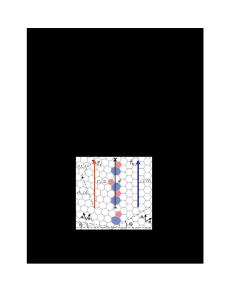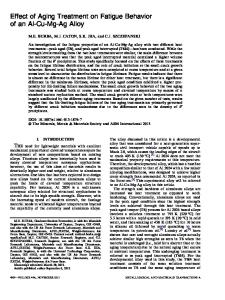Graphene Grown on Ion-Implanted 4H-SiC and an Effect of Pre-Plasma Treatment
- PDF / 607,405 Bytes
- 5 Pages / 612 x 792 pts (letter) Page_size
- 92 Downloads / 281 Views
Graphene Grown on Ion-Implanted 4H-SiC and an Effect of Pre-Plasma Treatment Toru Sugimachi1, Yusuke Shiina1, Daiki Aoyagi1, Tomoaki Nishimura2, Tohru Nakamura1 1 Department of EEE and Research Center for Micro-Nano Technology, Hosei University, Tokyo, Japan. 2 Research Center of Ion Beam Technology, Hosei University, Tokyo, Japan.
ABSTRACT 4H-SiC substrates were annealed at 1500 °C for 30 min in 0.01 MPa Ar gas flow to make a graphene film. To clarify the effect of Al ion implantation and pre-plasma treatment, the graphene was fabricated on four different kinds of SiC substrates: without plasma treatment, with plasma treatment, Al ion-implanted without plasma treatment and Al ion-implanted with plasma treatment. The graphene films were analyzed by AFM and Raman spectroscopy. The Al ion implanted sample, which was then processed by CF4 plasma, showed small surface roughness of 3.49 nm (RMS), while the sample without CF4 plasma treatment showed large surface roughness of 8.41nm. Similar results were also observed for SiC samples without Al ion implantation. In Raman spectra, strong D-band, G-band and 2D-band signals were detected on both ion-implanted samples after annealing at 1500 °C, but weak D-band were observed on both samples without Al ion implantation. Raman mapping (2D-FWHM) showed that the graphene on ion-implanted SiC treated with CF4 plasma was more homogeneous than the one without CF4 plasma treatment. Hall measurements for SiC without Al ion implantation showed that graphene on SiC treated with CF4 plasma has higher mobility (389 cm2/Vs) than that without plasma treatment (136 cm2/Vs). Additionally, p-type graphene can be fabricated on Al ion-implanted SiC by CF4 plasma treatment.
INTRODUCTION Graphene is a gapless semiconductor consists of monolayer carbon atoms. It has high mobility more than 200,000 cm2/Vs [1]. The best way to get good electrical properties is to use exfoliated graphene, however, the exfoliated graphene is not compatible with device fabrication since the domain becomes m-sized. One of the candidates to make large scale epitaxial graphene is hightemperature annealing of SiC substrate. In high temperature, Si atoms evaporate from substrate and thus, graphene is easily synthesized by C atoms after surface migration. In general, Ar gas atmosphere suppresses Si evaporation compared to UHV condition and it leads more equilibrated state on the surface. Therefore inert gas atmosphere makes better graphene than that made in UHV condition [2]. The epitaxial graphene on SiC shows n-type behavior which originates from the influence of the interface layer between graphene and SiC [3, 4].On the other hand, from a viewpoint of fabrication of planer devices, selective doping is necessary and it can be achieved by ion implantation technology. To remove the implantation induced damage and then activate the implanted dopant, high-temperature annealing is performed at temperatures higher than 1700 o C, which also induces large micro steps at the surface. We found that CF4 plasma treatment of the SiC
Data Loading...










